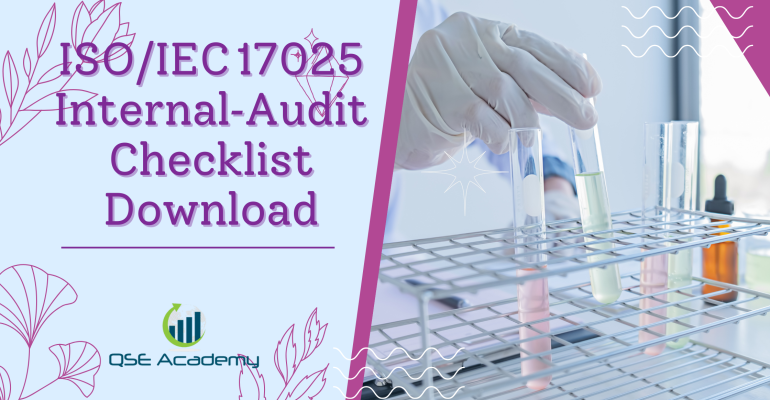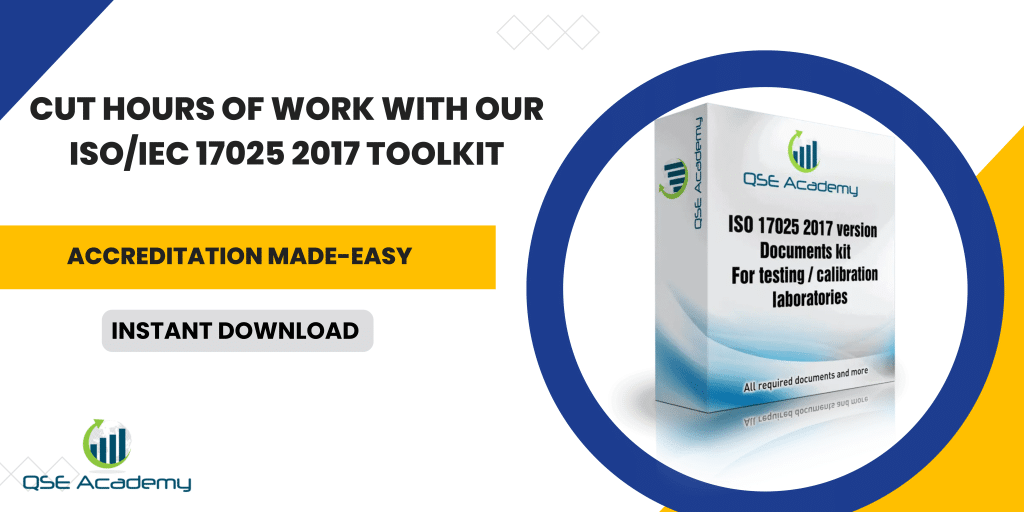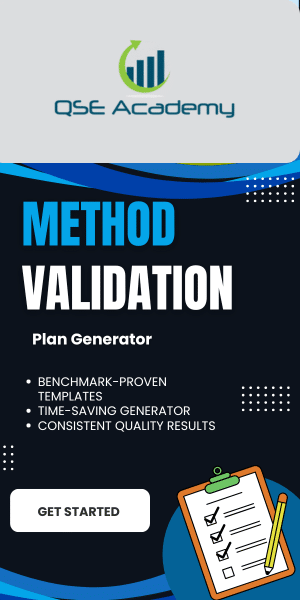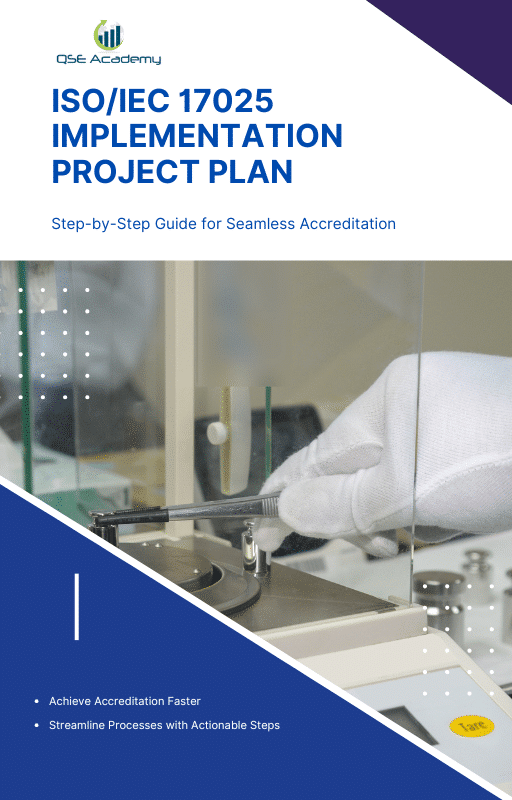ISO/IEC 17025 Internal‑Audit Checklist Download
Last Updated on October 13, 2025 by Melissa Lazaro
Why Every Lab Needs a Reliable ISO/IEC 17025 Internal-Audit Checklist
If you’ve ever sat through an accreditation audit and thought, “We could’ve caught this issue earlier,” you’re not alone.
I’ve worked with labs across testing, calibration, and inspection — and almost every one of them admits that internal audits are where they either shine or stumble.
Here’s what I’ve noticed: the difference between a smooth ISO/IEC 17025 audit and a stressful one often comes down to how structured your internal audit process is. And that structure starts with a solid, easy-to-use internal-audit checklist.
This isn’t just another form to tick boxes. It’s your confidence tool — the document that keeps your systems aligned with Clause 8.8 requirements, helps you catch issues early, and shows auditors that your lab walks the talk.
In this article, I’ll walk you through:
-
How to use an ISO/IEC 17025 internal-audit checklist effectively.
-
What clauses and areas to focus on.
-
Common audit pitfalls (and how to dodge them).
-
And, of course, where to download a free editable checklist you can start using today.
By the end, you’ll know exactly how to make internal audits work for you — not against you.
Understanding the Role of the ISO/IEC 17025 Internal Audit
Here’s something most labs underestimate: the internal audit isn’t just a yearly requirement you rush through to “tick the box.” It’s your built-in early warning system. Done right, it tells you exactly where your lab stands before the external auditor does.
Why Internal Audits Matter More Than You Think
ISO/IEC 17025 Clause 8.8 is clear—labs need to conduct internal audits at planned intervals to verify that their management system, technical activities, and results all meet both the standard and their own procedures.
But in practice, this clause does far more than compliance—it protects your reputation.
I’ve seen labs catch serious issues—expired reference materials, overlooked equipment calibration, inconsistent results—months before an assessor would’ve found them. That’s the real power of an internal audit.
Turning the Audit into a Performance Tool
Here’s what separates a good audit from a great one: intent.
A “good” audit checks paperwork.
A “great” audit checks whether the lab is performing to its purpose.
When you approach your internal audit with that mindset, it becomes a tool for improvement, not punishment. You start seeing patterns—maybe your review of results process is weak, or staff training records aren’t updated promptly. Every finding is a roadmap to get better.
Pro Tip
Don’t let your quality manager audit their own area. Fresh eyes catch blind spots. Have another trained auditor review that section for objectivity—it’s a simple step that often prevents embarrassing findings later.
Common Pitfall
Too many labs recycle old audit reports word-for-word. The same questions, same findings, year after year. It’s a red flag for assessors—they’ll immediately ask, “So what’s improved?” Your audit checklist should evolve with your lab, just like your processes do.
Step-by-Step Guide to Using the ISO/IEC 17025 Internal Audit Checklist
If you’ve ever wondered why internal audits feel chaotic, it’s usually because the process isn’t broken down clearly. A solid checklist brings order—so you don’t miss a single clause, document, or calibration record. Let’s walk through how to actually use it, step by step.
Step 1: Plan Your Audit Schedule and Scope
Start by defining what you’ll audit, when, and who’s responsible. ISO/IEC 17025 doesn’t tell you how often to audit—it leaves that up to you based on risk and performance.
In my experience, labs that audit quarterly catch issues faster and spread the workload evenly. For example, one calibration lab I worked with audits a different process every quarter—sample handling in Q1, equipment in Q2, reporting in Q3, and management system in Q4. By year-end, they’ve covered everything without burning anyone out.
Pro Tip: Map your audit schedule to your process flow. It keeps the audit logical and saves time hunting for records later.
Pitfall to Avoid: Auditing only what’s easy. Processes like purchasing or subcontracting might seem less “technical,” but they’re often where nonconformities hide.
Step 2: Conduct the Audit Using the Checklist
This is where structure pays off. Your internal-audit checklist should mirror the ISO/IEC 17025 clauses so you can easily verify compliance point by point.
For each item, ask three simple questions:
-
Is there a documented procedure?
-
Is it being followed consistently?
-
Is there evidence to prove it?
When you find gaps, document them immediately. Don’t rely on memory—you’ll lose details later.
Example:
If Clause 6.4 (Equipment) asks for calibration records, check the file. If the calibration due date passed last month, mark it as a nonconformity. Simple as that.
Pro Tip: During interviews, skip “Do you have a procedure for this?” Instead, ask “Can you show me how you do it?” You’ll learn a lot more about how the system actually works.
Step 3: Report Findings Clearly
After the audit, summarize what you found in plain terms—no buzzwords, no fluff. Categorize each finding as:
-
Conforms: meets the requirement.
-
Observation: could be improved.
-
Nonconformity: fails to meet the requirement.
An example I still remember: a testing lab used an unverified balance for six months. The audit finding was logged under Clause 6.4, the root cause traced to poor scheduling, and the corrective action was to set automatic calibration alerts. By the next audit, the issue never reappeared.
Pro Tip: Always link each finding to the exact clause number. It helps you (and the assessor) trace every issue quickly.
Pitfall: Treating the report like a formality. Your findings drive your corrective-action plan—if they’re vague, your improvements will be too.
Step 4: Follow Up and Close Out Actions
An audit doesn’t end when the report’s filed. The follow-up stage proves your management system actually improves.
Track every corrective action until it’s verified as effective. If you closed a nonconformity last month but didn’t confirm the fix works, expect auditors to flag it later.
In one lab I supported, they introduced a simple color-coded tracker: red for open, yellow for ongoing, green for closed. Within three months, audit closure time dropped by half.
Inside the Checklist – Key Clauses Covered in the ISO/IEC 17025 Internal Audit
If you’ve ever flipped through ISO/IEC 17025 and thought, “Where do I even start?” — you’re not alone.
The standard covers everything from impartiality to method validation, and missing just one clause can derail your compliance story.
That’s exactly why a well-built checklist mirrors the structure of the standard — so you can audit systematically without second-guessing what’s next.
Let’s break down the four major areas your checklist should cover and what to look for in each.
1. Management Requirements (Clauses 4–5)
These clauses focus on the framework that holds your lab together — impartiality, confidentiality, and management commitment.
Here’s what I look for:
-
Is your organizational chart current and reflective of actual roles?
-
Are potential conflicts of interest identified and addressed?
-
Has top management demonstrated commitment through regular reviews and resource allocation?
Pro Tip: Auditors love evidence of impartiality in action — things like documented conflict-of-interest declarations or independent review notes.
Common Pitfall: Labs often think a one-time policy covers impartiality forever. It doesn’t. If staff roles or contracts change, your risk review should too.
2. Resource Requirements (Clause 6)
This is where many internal audits uncover hidden weaknesses. Clause 6 covers people, equipment, and facilities — the backbone of reliable results.
Ask yourself:
-
Are competence records up to date for all staff performing critical tasks?
-
Are all instruments calibrated and maintained within their due dates?
-
Are your environmental conditions monitored and recorded consistently?
Example: A calibration lab once missed temperature-control documentation for six months — and it cost them a full corrective-action cycle during assessment. A simple daily log would’ve prevented it.
Pro Tip: Verify actual calibration certificates — don’t just assume they exist in the system.
3. Process Requirements (Clause 7)
This is where the technical heart of your lab is tested — method validation, measurement traceability, sampling, and reporting.
Check for:
-
Validated test methods (including non-standard or modified ones).
-
Traceability of measurements through accredited calibration sources.
-
Proper handling and storage of test and calibration items.
-
Accurate, authorized test reports issued under controlled conditions.
Pitfall to Avoid: Copying validation summaries from other labs. Assessors can spot that instantly. Your validation must reflect your actual equipment, personnel, and conditions.
4. Management System Requirements (Clause 8)
Finally, this is the engine that keeps everything moving — document control, records, internal audits, corrective actions, and management reviews.
Here’s what your checklist should confirm:
-
Controlled access to documents (no outdated SOPs floating around).
-
Records retention policies aligned with ISO requirements.
-
Evidence that management reviews are performed, documented, and followed up.
Example: A client once treated their management review like a 15-minute meeting. After adding data on turnaround times, complaints, and audit findings, it became their strongest compliance evidence.
Pro Tip: Use your internal audit findings as input for management review — it demonstrates continuous improvement rather than isolated compliance.
Common Pitfalls in ISO/IEC 17025 Internal Audits (and How to Avoid Them)
After years of helping labs get ready for accreditation, I’ve seen one thing repeatedly—most audit issues don’t come from lack of knowledge, they come from habit. Labs get comfortable, processes get automatic, and before you know it, nonconformities pile up in the same places every year.
Here are the most common traps labs fall into during internal audits—and how you can sidestep them.
1. Treating the Audit Like a Paper Exercise
Too many labs still approach internal audits as “document checks.” They open folders, verify procedures exist, and move on.
Here’s the problem: ISO/IEC 17025 isn’t just about what’s written—it’s about what’s done.
If your staff can’t demonstrate the process in practice, you don’t have conformity—you have documentation.
In one calibration lab, auditors found perfect procedures but inconsistent equipment logs. The issue wasn’t lack of forms—it was lack of follow-through.
Fix: Combine document review with live observation. Watch how tests or calibrations are performed. It’s the quickest way to spot where procedures don’t match reality.
2. Repeating the Same Findings Year After Year
If your internal audits look identical each cycle, that’s a red flag. It tells assessors you’re not learning from findings.
I once reviewed a lab’s reports that listed “improvement opportunity” for training records three years in a row—same note, zero progress.
Fix: Track recurring findings and make them part of your management-review agenda. If an issue keeps coming up, it’s not an audit problem—it’s a system problem.
3. Ignoring the Follow-Up
Writing findings is easy. Following them through to verified corrective action is where real improvement happens.
I’ve seen excellent audits lose credibility because corrective actions were marked “closed” with no proof the fix worked.
Fix: Always verify the effectiveness of corrective actions before signing off. A simple check-in 30 days later—“Has this procedure been updated and applied?”—is often enough.
4. Using a Generic Checklist for Every Audit
There’s nothing wrong with templates—they save time. But using one straight out of a download without adapting it to your scope is a shortcut that backfires.
For example, a testing lab used a calibration checklist. Half the questions didn’t apply, and the auditor spent more time skipping sections than auditing.
Fix: Customize the checklist to your lab’s activities. Delete irrelevant sections, add clauses specific to your methods, and include space for process-based notes.
5. Failing to Involve the Team
When internal audits are done by one person behind a desk, everyone else tunes out.
In reality, audits work best as a team effort. They build understanding and ownership—especially when staff see how their work ties into accreditation.
Fix: Rotate audit responsibilities or involve technical staff in parts of the process. It builds competence and reinforces a culture of accountability.
Pro Insight:
The strongest labs I’ve seen treat internal audits like a rehearsal—not a burden. They use findings to train, not to blame. When the external assessor walks in, the team’s already confident because they’ve practiced under real conditions.
Download Your Free ISO/IEC 17025 Internal-Audit Checklist (Template + Guide)
You don’t need to reinvent the wheel. Over the years, we’ve refined a practical, lab-tested checklist designed to make ISO/IEC 17025 internal audits smoother, faster, and far less stressful. This is the same tool we’ve used with dozens of clients to help them identify gaps long before accreditation day.
Here’s what’s inside your free ISO/IEC 17025 Internal-Audit Checklist package and how to use it effectively.
What’s Included
1. Editable Internal-Audit Checklist (Word & Excel)
Covers all the clauses of ISO/IEC 17025:2017 — from management and resource requirements to process and system controls. Each question ties directly to a clause, so you can mark evidence and findings right beside it.
2. Audit Plan Template
This helps you schedule audits by process, assign responsibilities, and record completion dates. It’s the simplest way to prove a risk-based audit cycle when assessors ask.
3. Corrective-Action Tracker
A clean, color-coded table that links each nonconformity to its root cause, corrective action, and verification status. This turns your audit results into real improvements rather than paperwork.
How to Use the Checklist
-
Start with your scope.
Before anything else, define what part of your lab you’re auditing—testing, calibration, sampling, or reporting. Then tailor the checklist to match those activities. -
Audit clause-by-clause, but think process-by-process.
Don’t just tick off requirements. Follow the workflow from sample receipt to result release. It helps you see how clauses connect in real operations. -
Record evidence immediately.
Whether it’s a screenshot, equipment log, or interview note, document it on the spot. A good checklist becomes your ready-made audit trail. -
Turn findings into action.
Every “No” in your checklist is an opportunity. Transfer it into the corrective-action tracker and set a deadline.
Pro Tip
Always save a copy of each completed checklist. Over time, it becomes a powerful trend record showing how your lab improves. During external assessments, that history speaks louder than any policy statement.
Ready to Get Started?
[Download the ISO/IEC 17025 Internal-Audit Checklist here] — available in both editable Word and Excel formats.
It’s completely free to use and customize for your lab. You’ll also receive a short guide on how to align your internal-audit results with management-review inputs — a small step that often earns big points during accreditation.
FAQs – ISO/IEC 17025 Internal Audits
Over the years, I’ve answered hundreds of the same questions from lab managers who are just trying to make sense of internal audits. Here are the top ones I hear most often — answered clearly and practically.
Q1. How often should we conduct internal audits for ISO/IEC 17025?
There’s no one-size-fits-all rule in the standard. ISO/IEC 17025 simply says “at planned intervals,” which means it depends on your lab’s risk, size, and performance.
In practice, most labs do a full internal audit once a year — but smarter labs break it down quarterly or bi-annually. That way, you’re not scrambling before assessment season.
Pro Tip: Base your audit frequency on risk. High-risk processes (like equipment calibration or data handling) deserve more frequent checks than low-risk administrative ones.
Q2. Can we use the same internal-audit checklist for both testing and calibration labs?
You can — but not straight out of the box. The framework and clauses are the same, but the evidence and verification points differ.
For example:
-
A testing lab focuses on sample integrity, method validation, and result reporting.
-
A calibration lab focuses on traceability, uncertainty estimation, and reference standards.
If your lab does both, use one base checklist but tailor it for each activity. It keeps your audit relevant and saves time explaining irrelevant questions to auditors.
Q3. Who should perform the internal audit?
Anyone qualified and independent of the activity being audited. That’s key. ISO/IEC 17025 values impartiality — even inside your lab.
Your internal auditor doesn’t need to be external, but they should have training in ISO/IEC 17025 and ideally, a basic understanding of auditing techniques (like ISO 19011).
Real-world example:
One client had their senior chemist audit microbiology — an area she wasn’t directly involved in. She caught small procedural inconsistencies that the microbiology lead never noticed. That’s the benefit of an independent perspective.
Q4. What happens if we find a nonconformity during our internal audit?
That’s a good thing — it means your system works. Internal audits are designed to uncover issues before assessors do.
Log the finding, investigate the root cause, and implement a corrective action. Then verify the fix works. If it’s a recurring issue, discuss it in your management review.
Auditors don’t expect perfection. They expect evidence that you recognize and address weaknesses systematically.
Q5. Can an external consultant perform our internal audit?
Yes, absolutely — many labs do this, especially small ones with limited staff. Just make sure the consultant is trained in ISO/IEC 17025 and impartial to your organization’s day-to-day activities.
That said, it’s still smart to train at least one internal staff member in auditing. It helps build long-term capability instead of full dependency on consultants.
Take Control of Your ISO/IEC 17025 Compliance
Internal audits don’t have to feel like a mountain of paperwork or a nerve-wracking rehearsal before accreditation day. When done right, they become your lab’s built-in improvement system — the pulse check that keeps everything healthy and compliant.
I’ve seen this transformation happen over and over. Labs that once dreaded their audits now look forward to them because they see tangible results — fewer findings, smoother assessments, and stronger confidence from clients. All it took was structure, ownership, and a good checklist.
So here’s your takeaway:
-
Plan your audits based on risk and performance.
-
Use a structured checklist that ties every finding to the correct clause.
-
Treat every audit as a learning tool, not a compliance exercise.
-
Close out findings properly — improvement happens in the follow-through.
If you follow that rhythm, ISO/IEC 17025 internal audits stop being a chore and start becoming one of your lab’s biggest assets.
At QSE Academy, we’ve helped countless labs move from “audit anxiety” to “audit readiness.” Our consultants bring real-world experience from testing, calibration, and inspection bodies — and that’s exactly what shaped the checklist you just downloaded.
Next step: [Download your ISO/IEC 17025 Internal-Audit Checklist] if you haven’t already, and start using it for your next internal audit cycle.
You’ll be surprised how much smoother accreditation feels when your system’s been tested by you — before anyone else does.
I hold a Master’s degree in Quality Management, and I’ve built my career specializing in the ISO/IEC 17000 series standards, including ISO/IEC 17025, ISO 15189, ISO/IEC 17020, and ISO/IEC 17065. My background includes hands-on experience in accreditation preparation, documentation development, and internal auditing for laboratories and certification bodies. I’ve worked closely with teams in testing, calibration, inspection, and medical laboratories, helping them achieve and maintain compliance with international accreditation requirements. I’ve also received professional training in internal audits for ISO/IEC 17025 and ISO 15189, with practical involvement in managing nonconformities, improving quality systems, and aligning operations with standard requirements. At QSE Academy, I contribute technical content that turns complex accreditation standards into practical, step-by-step guidance for labs and assessors around the world. I’m passionate about supporting quality-driven organizations and making the path to accreditation clear, structured, and achievable.












